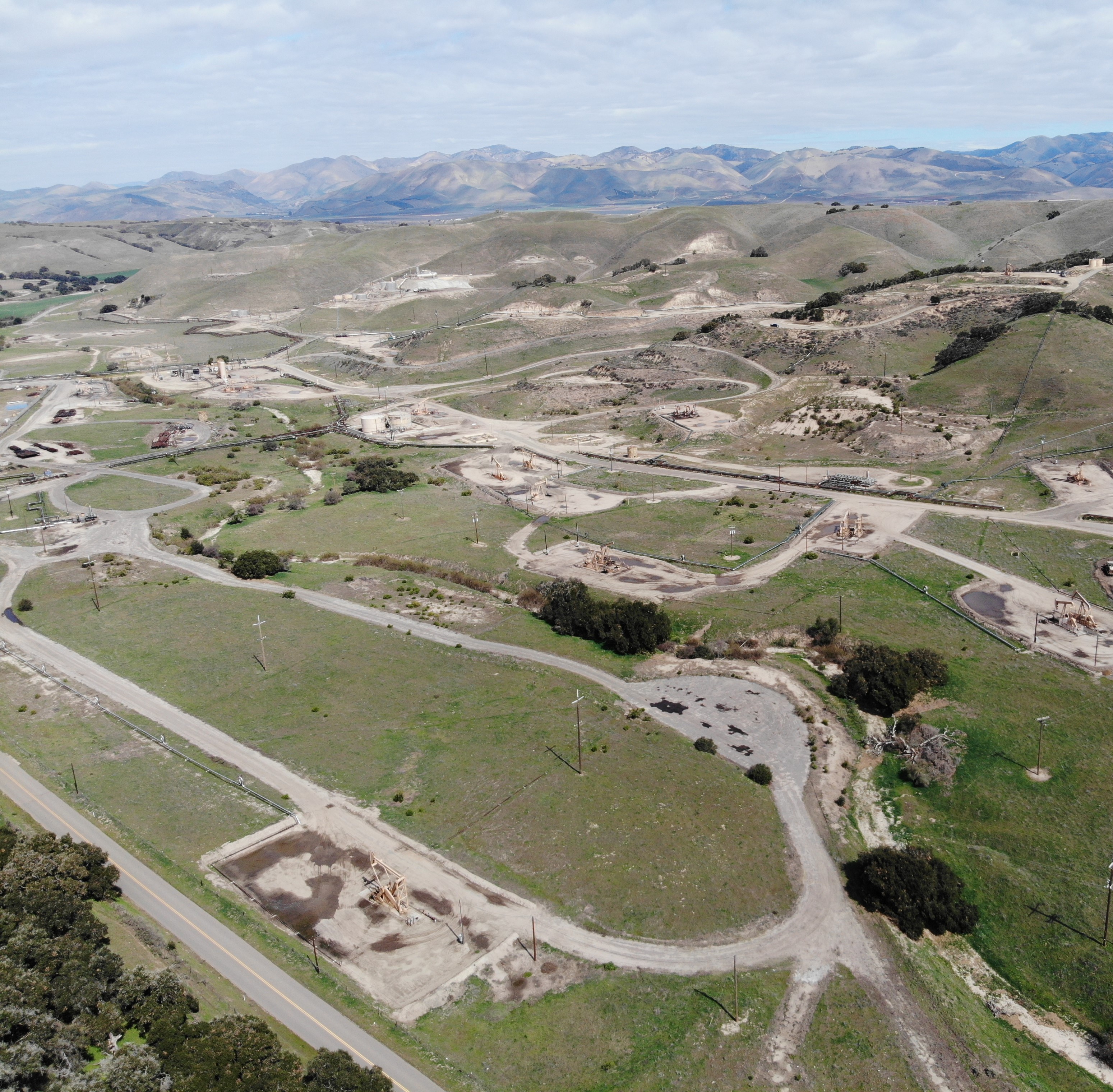Pipeline Project Forges On Despite Pending Closure of Destination Refinery
Cat Canyon Resources Ditches Plans for New Oil Wells but Proceeds with Foxen Petroleum Pipeline

Three companies hoped to sink new wells in Cat Canyon, and all three have abandoned their applications to do so, but the last company standing — Cat Canyon Resources — will move forward with plans to add a short stretch of pipeline to replace the trucking of the crude. On Tuesday, the Board of Supervisors approved the change of ownership and names on the project documents from ERG to Terracore to Cat Canyon Resources. The 2.9-mile pipe will tap into an existing pipeline headed for Phillips 66’s Nipomo Mesa, which is due to shut down in 2023.
Originally approved in 2015, the Foxen Petroleum Pipeline project got a one-year extension in August, despite objections by the Environmental Defense Center that it crossed five creeks and lacked any secondary containment should an oil spill occur. As well, EDC considered the pipeline to be an extension of well permits ongoing at the time and that the two merited a joint evaluation.
About 2,000 barrels a day come out of the company’s West Cat Canyon oilfield, said company representative Rich Field, and they had opted to concentrate on current operations rather than expand them. Field emphasized that 50 employees and about 30 working for contractors would stay employed. The oilfield has existed since the 1940s, and among the extraction techniques since the ’50s has been steam injection, said Field. Currently, the company cyclic-steams about 130 wells, while about 30 are in cold production.
Get the top stories in your inbox by signing up for our daily newsletter, Indy Today.
In the running battle against adding oil wells in Cat Canyon — a set of rolling hills east of Santa Maria that is so riddled with well pads that it looks like a hair transplant gone awry — the EDC fought the proposals for high-pressure oil extraction, claiming the technique led to a greater chance of seismic issues and intrusion of wastewaters into the aquifer. The issue was actually raised in a draft environmental impact report by another Cat Canyon operator, Aera Energy, which withdrew its application for new wells in May:
“… ERG indicates that their target for stimulation and extraction is the Sisquoc Oil Sands … located 2,500 feet below the surface. However, injection of the non-potable produced water … is planned for the Monterey Formation at depths of several thousand feet deeper…. As these two units are separated by 500 or more feet of the Lower Sisquoc confining layer, this does not create balanced well stimulation.”
“I don’t know if I agree with their analysis,” Field said. “The field never had any impacts from a seismic perspective in the hundred years or so of production in Cat Canyon … and no issues of contaminated groundwater.”
The proposal to add 187 wells also lacked a greenhouse-gas emission-reduction plan, the EDC charged, to which Field answered that Cat Canyon Resources had been in conversation with county staff about a solar array to power operations, carbon sequestration, and California’s cap-and-trade system.
Recognition is universal that the Foxen pipeline would eliminate the hundreds of truck trips the newly revived oilfield would have generated. But the pipeline it ties into goes west to Phillips 66’s refinery on the Nipomo Mesa. The crude was partially refined there and then piped another 200 miles to Phillips’s Rodeo refinery in the Bay Area, which is to be converted to alternative fuels by 2023. In Phillips’s August announcement, it said its Central Coast facilities would be shuttered and dismantled.
The area’s other pipeline, Plains All American’s Line 903 to Kern County, has been closed since the upstream Line 901 broke and caused the 2015 Refugio Oil Spill. Plains has hundreds of new easements to be negotiated with property owners before it can replace the pipeline. The Plains pipeline connects with the Phillips line at Sisquoc, but they head to the east and west, respectively. A whole lot of oil and money needs to flow before it becomes known if the Plains line could be used once Phillips’s Central Coast facilities are gone.
About $2 million has gone into the Foxen pipeline so far, said Fields, and mitigations remain to be worked out. As for Phillips’s Central Coast facilities, a lot of local operators used them and another operator might take them over, he said. Cat Canyon had options and a lot of uncertainty.
Every day, the staff of the Santa Barbara Independent works hard to sort out truth from rumor and keep you informed of what’s happening across the entire Santa Barbara community. Now there’s a way to directly enable these efforts. Support the Independent by making a direct contribution or with a subscription to Indy+.



